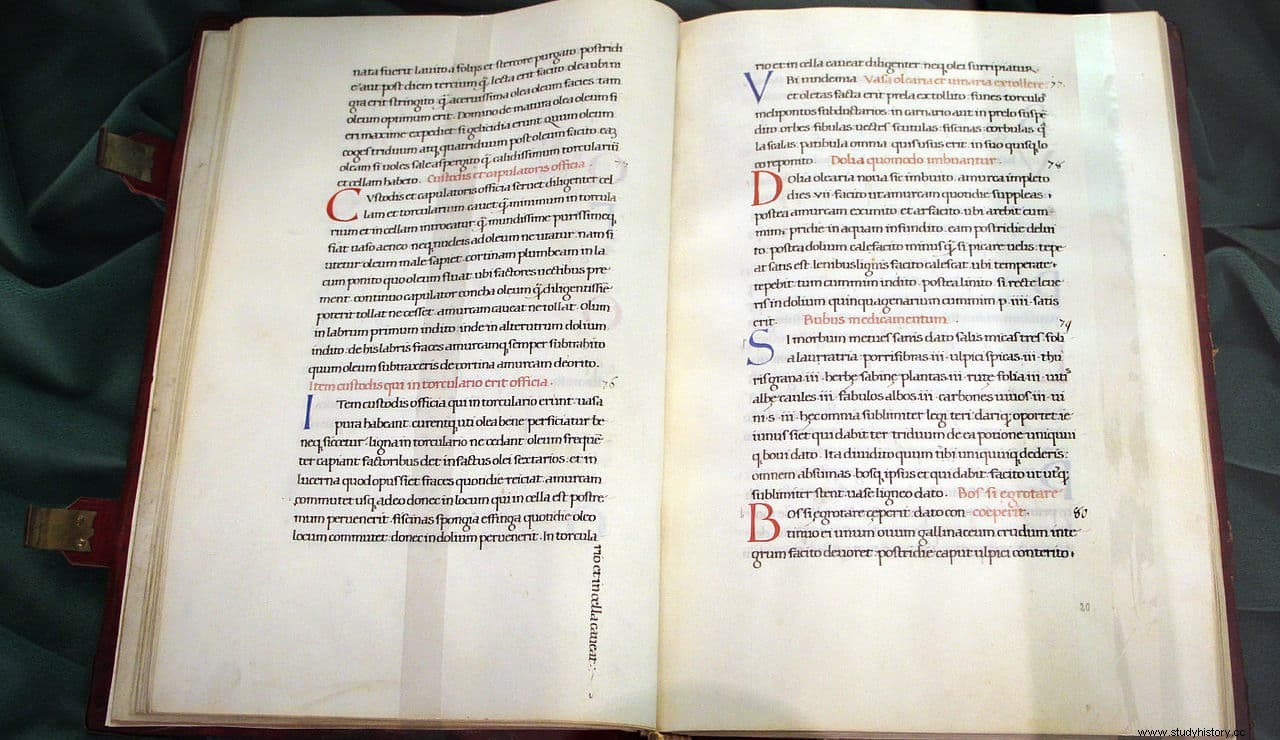As we discussed in a previous article, barely one percent of all the literature produced by the Romans in Antiquity has survived to this day. The oldest surviving Latin text is a hymn recited by the priests of Mars at their annual feast, found inscribed on a stone in Rome in 1777.
Latin literature is considered to begin in 240 B.C., when Livy Andronicus' Latin adaptation of a Greek play is performed (Andronicus was a Greek taken prisoner in 272 B.C. and brought to Rome, and also translated the Odyssey ).
Around the same time Nevio composed the first epic poem in Latin, it was no longer a translation like those of Andronicus, but completely original, for which he is considered the first Roman poet.

But in terms of prose works, the oldest known dates back to 160 BC, that is, about 80 years after Andronicus's translations. It is about De Agri Cultura , an agricultural manual aimed at Roman landowners, which also included instructions for wine production and recipes, but also management advice on slaves.
It was written by Marco Porcio Cato, better known as Cato the Elder, a politician and military man famous for being the driving force behind the third Punic War and the destruction of Carthage.
Cato's image was that of a staunch defender of traditional Roman life and the rural spirit, stern and strict in both public and family affairs. His reputation for ironclad morality, however, suffered a serious blow when, on the death of his wife, he remarried one of his female slaves. In fact, his son would never speak to him again, and the family would split into two branches. Curiously, the most prominent of the two would be the one that descends from the son he had with his second wife, to whom his great-grandson Cato the Younger belongs (remembered for his tenacious opposition to Julius Caesar).

Cato the Elder was also the first historian to write a complete history of Rome and other Italic cities since their founding, sadly lost, and which only survives in fragments through citations by other authors. According to Pliny the Elder, Cato used this history of Rome to teach his son to read. Precisely addressed to his son was a series of advice that he compiled in Praecepta ad Filium , of which only one has survived that reflects very well the character and way of thinking of him:
In De Agri Cultura (On Agriculture), Cato writes from his own experience as a landed farmer, in a simple and, in the opinion of many experts, somewhat archaic manner. The text does not follow a plan but is quite random, full of superstitions mixed with practical advice, but it is essential to know what rural life was like at the time of the Roman Republic.
Cato takes the opportunity to criticize other activities such as trade and usury and compare them with the benefits of agricultural life. He despises trade because of its dangers, and usury because Roman law considers it worse than theft. According to Cato, only agriculture can make good citizens and soldiers, and provide the right moral values.

The instructions provided in De Agricultura they served so that Rome began to produce wine on a large scale, employing more and more slaves in it. This is the first time we have found the recipe for vinun graecum , an imitation of the Greek wine with salt (that is, mixed with sea water) that the Romans produced in abundance, and even though the method is different, it is still produced today in the Calabria region.
Other parts of the manuscript collect religious rituals, which had to be carried out by farmers to ensure the success of the harvests. And also culinary recipes such as those of the savillum (cheesecake), the libum (a cake similar to the current panettone, made with flour, cheese, eggs and honey, decorated with bay leaves), and the placenta .

The placenta is a traditional dish from ancient Rome, made with several layers of tracta interspersed (tracta was a kind of pastry dough used in Greek and Roman cuisine) with a mixture of cheeses and honey, all flavored with bay leaves, baked and coated again with honey. Something like an extremely sweet lasagna.
However, as we have seen, although Cato despised all things Hellenic, researchers are almost certain that he copied the placenta recipe from a Greek cookbook. From the Greek version of the dessert would derive the current tiropita and baklava, and even on the island of Lesbos a traditional layered dessert with nuts, which is baked and covered with honey, is still called placenta.
Agriculture it is the only work by Cato to have survived in its entirety. An edition, made in 1541 in Venice, is kept in the National Library of Madrid.
